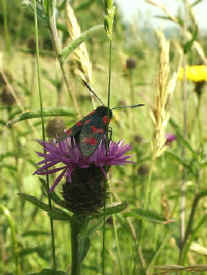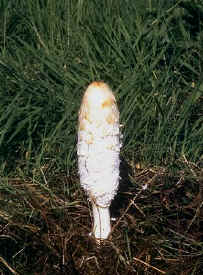Strictly speaking, a meadow is a grass field which is
cut for hay. For the purposes of these pages, a meadow is taken to be a flower rich, low
intensity agricultural grassland.
- Meadows are small, permanent pastures which have not been ploughed
for at least seven years.
- They are grazed by small numbers of cattle or sheep and, or cut for
hay.
- They are low input, low output grasslands. Grass yield is typically
15 times less than intensive grasslands.
- They tend to be old landscape features, bounded by similarly old
boundaries such as species rich hedges, old stone walls or woodlands.
- Meadows harbour a great diversity of plant and animal species,
although individual meadows will tend to be a fairly uniform habitat overall.
- Meadows can be broadly divided into two types: Dry hay meadows and
wet, water meadows.
- The plants and animals which are found in each type will usually
differ substantially because of differences in the soil condition.
- Hay meadows are cut late in the summer season which allows ground
nesting birds and mammals time to rear their young.
- Meadows are composed of many plants which include mixtures of native
wild grasses, interspersed with different wild flower species.
- A great variety of invertebrates, birds and mammals can be found in
meadows, either feeding on the plants or on each other.
- 97% of meadows have been lost since World War II, largely as a
result of changes in farming practices.
- This has led to a decline in many once common species, both plant and
animal.
- Some species such as the Cornkrake, nest in hay meadows and have
become extinct in England.
- Meadows can be restored or recreated, but it takes a long time to
establish the complex ecosystems present in old meadows.
 |
 |
 |
| Meadows can support a wide range of
plants, fungi and animals |
|

